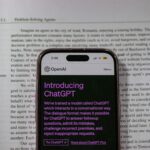● A case of hit & miss – The bag of Sri Lanka’s ESG
numbers Stronger ESG numbers in a country help spur investors towards it as they sustain their confidence.
The World Bank’s ESG Data Portal is an online data platform and provides “sovereign-level environmental, social and governance (ESG) data” – meaning it provides country-by-country macro data on the three pillars of ESG-Environment, Social and Governance. This data portal is a major achievement in the ESG industry. For the first time, a set of indicators that are comparable country-
by-country on each singular ESG pillar is presented by a global agency. Even though the main focus of the data platform is the UN’s Sustainable Development Goals, the portal’s globally standardized nature is an important starting point for everyone in the ESG industry-and outside of it- who look for country-to-country, macro-level comparisons. Therefore it is no surprise that the portal has become
a first stop for many global investors working on cross-border funding.
The World Bank identifies Sri Lanka as a lower-middle-income country. This means Sri Lanka is now ranked along with Benin, Nepal, Tanzania, Algeria, Cambodia, Honduras, Pakistan, Vanuatu, and Vietnam. The new Sovereign ESG Data Portal also accepts this lower middle-income classification for Sri Lanka.
In Sri Lanka’s case, everyone agrees that the search for FDI is critical, masked only by the country’s national crisis. The country is in a crisis of bankruptcy. The search for immediate finances is understandable as such. Still, immediate first aid alone does not cure a patient. Stronger, treatment-oriented meds will strengthen the patient’s core and get the patient out of bed in the medium to
longer term. FDI is the treatment type of meds called for.
The World Bank Data Portal presents Sri Lankan ESG data as well. What is noteworthy is that some ESG data points are not available for Sri Lanka, though the same data points for many other countries are readily available in them. After a hiatus of two-three years rolling with the Pandemic and national crisis, it appears that a new round of data gathering for Sri Lanka is required to update
the country’s ESG numbers.
Access to clean fuels and technologies for cooking (% of the population) in Sri Lanka is 32.2 (world at 69.6). Adjusted savings: natural resources depletion (% of GNI) is 0.1 (world 0.8), adjusted savings: net forest depletion (% of GNI) 0.1 (world 0.1), annual freshwater withdrawals, total (% of internal resources) at 24.5, and level of water stress: freshwater withdrawal as a proportion of available freshwater resources at 90.8. The terrestrial and marine protected areas (% of the total territorial area) are at 3.4 (world at 14.8). These numbers alone do not paint the full picture of Sri Lanka’s ESG makeup. There are many more important ESG elements that are not calculated in the country’s datasheet. Once they too are finalised, the investors’ world would see a better picture.
It should be noted that Sri Lanka’s attractiveness to pull FDI is not awe-inspiring.
In the World Bank’s own words: “Sri Lanka and foreign investments read a bit like a hit and miss story.”



